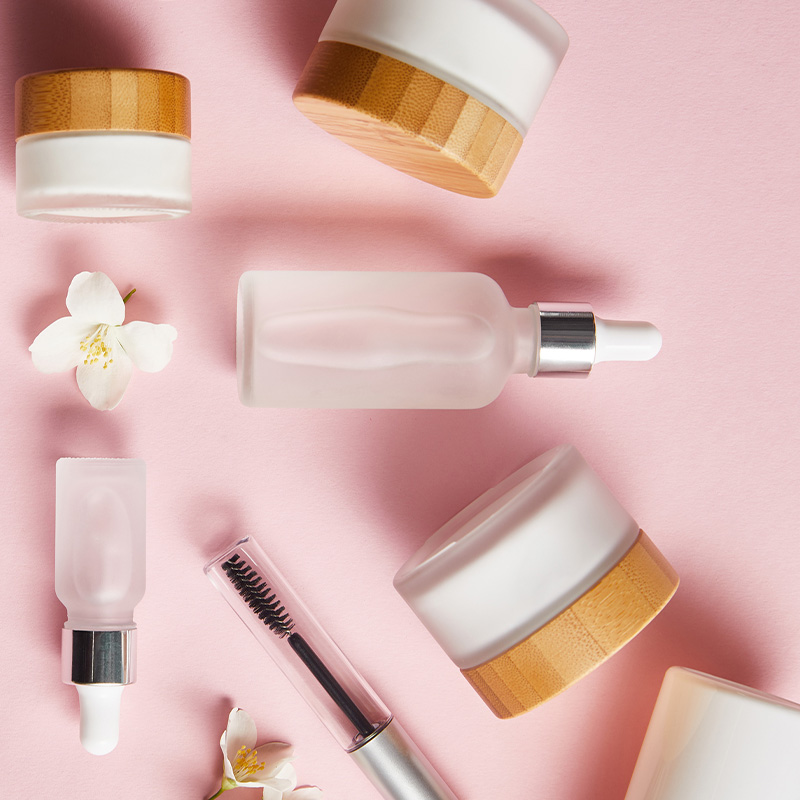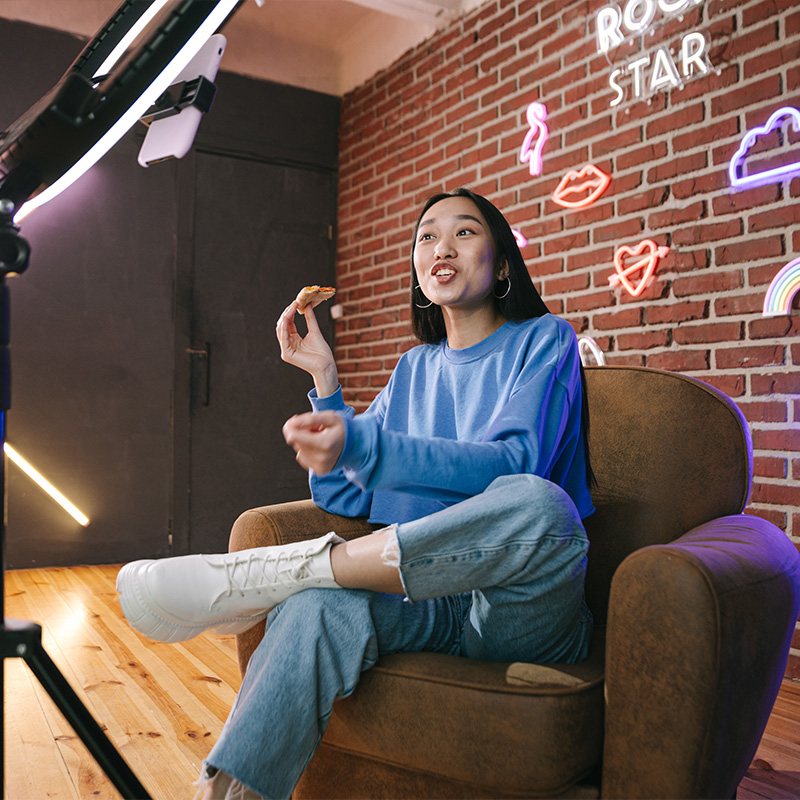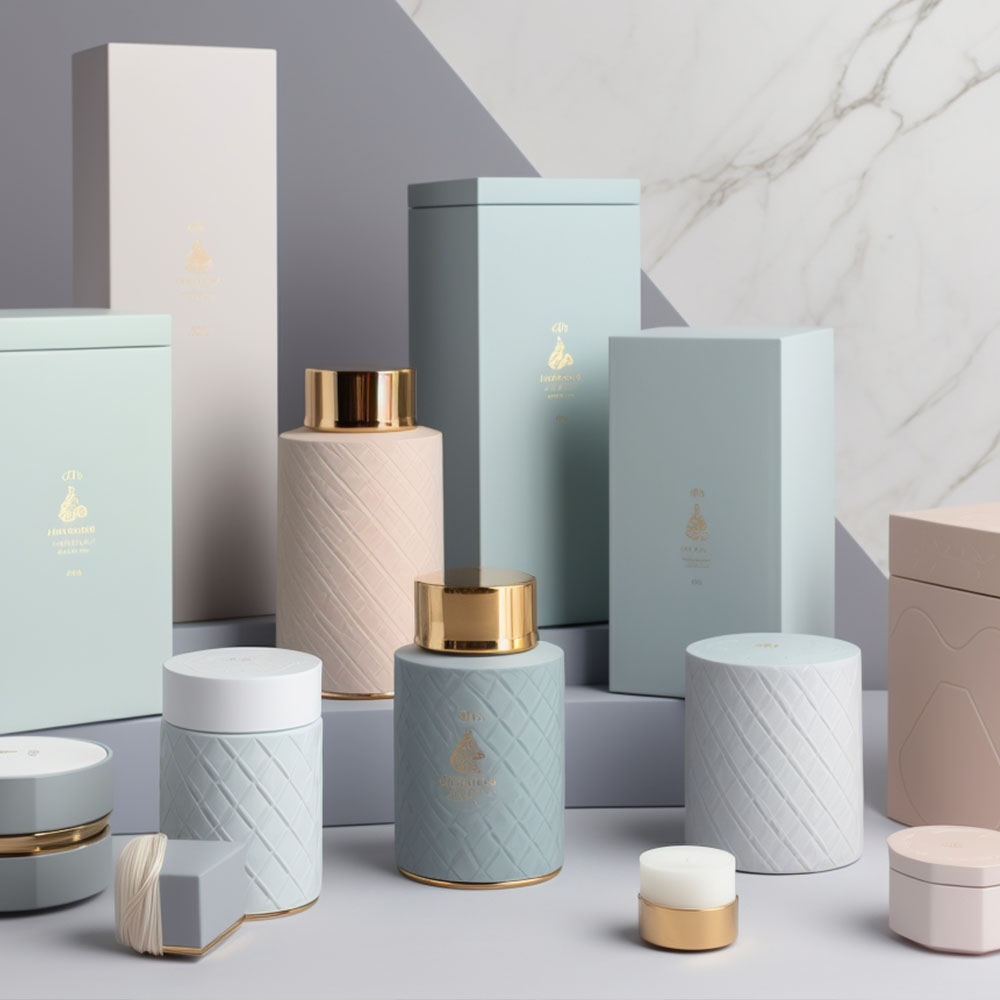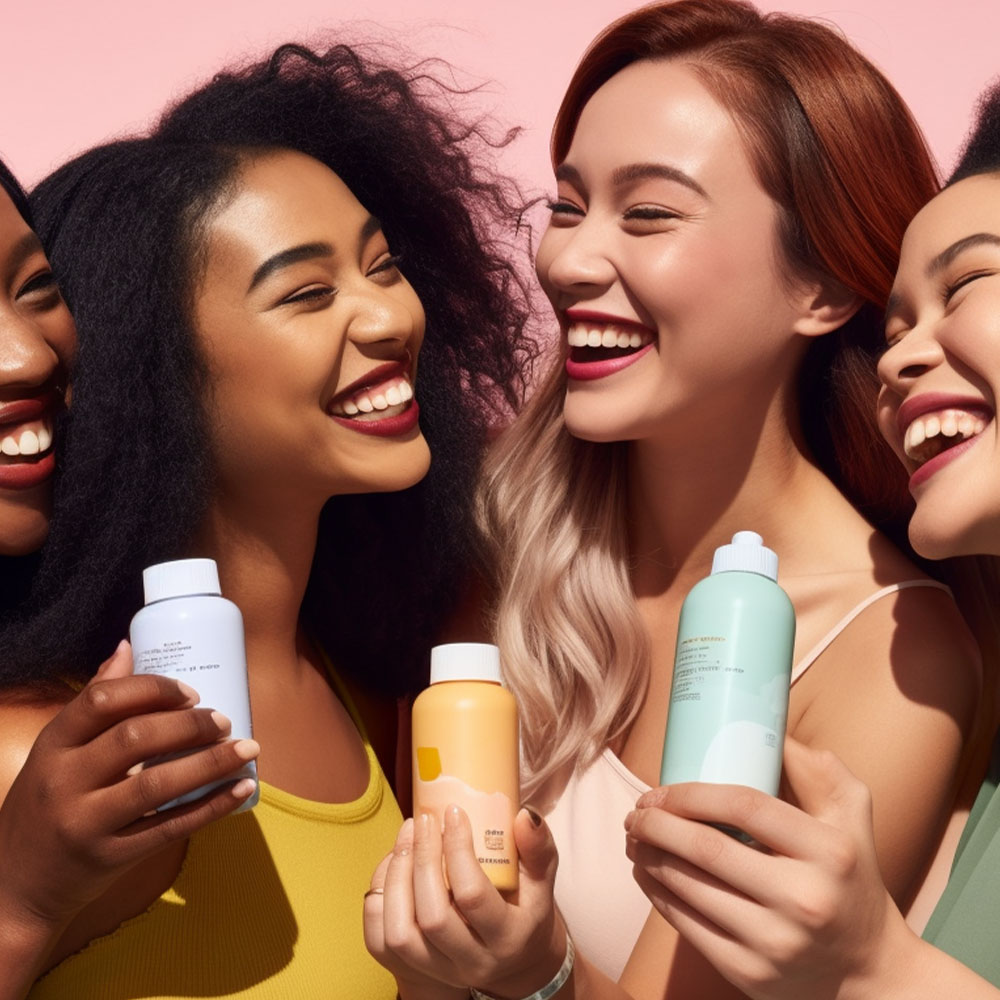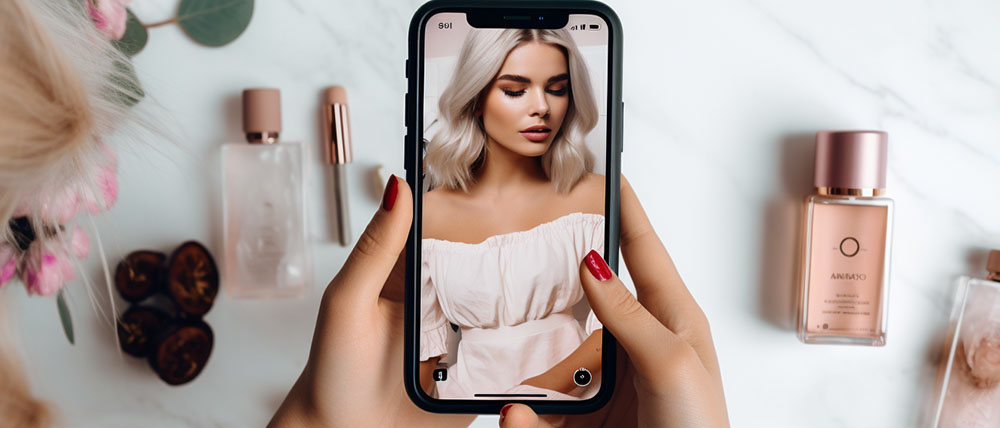
As the beauty industry continues evolving, brands constantly seek new and innovative ways to stand out in a crowded market. One such strategy recently gaining traction is leveraging influencer partnerships for brand growth. By collaborating with social media influencers who have established followings and credibility within the beauty space, brands can tap into their audiences and reach a broader demographic.
This article will explore how beauty brands can effectively leverage influencer partnerships to drive growth and engagement. From identifying the right influencers to crafting compelling campaigns and measuring success, we’ll provide actionable insights for brands looking to take their marketing efforts to the next level. Whether you’re a small indie brand or an established player in the industry, there’s plenty of opportunity to harness the power of influencer marketing – so let’s dive in!
Beauty brands must constantly adapt to stay relevant in today’s fast-paced world. One way to do this is through influencer partnerships. Influencers significantly impact their followers’ purchasing decisions, making them valuable allies for makeup and skincare companies.
Maximizing ROI is a top priority for any business. By partnering with the right influencers, beauty brands can see a substantial return on investment. The key is choosing niches that align with the brand’s values and target audience. For example, a company specializing in vegan products may want to collaborate with an influencer who shares those beliefs.
In addition to boosting sales, influencer partnerships also offer other benefits. They help build brand awareness by exposing new audiences to the products. This can lead to increased social media following and website traffic. Additionally, working with influencers offers opportunities for creative collaborations to enhance a brand’s image.
Overall, influencer marketing has become an essential component of the beauty industry’s growth strategy. Brands that understand how to leverage these relationships stand to gain significant advantages over their competitors. From maximizing ROI to building brand awareness and enhancing creativity – there are numerous reasons why partnering with influencers should be part of every beauty marketer’s toolkit.
Identifying The Right Influencers For Your Brand
In today’s digital age, influencer marketing has become integral to beauty brand growth. But with so many influencers out there, choosing the right ones for your brand can be overwhelming. Finding niche micro-influencers who align with your brand values and speak to your target audience is critical.
- Look for influencers within your niche: When searching for potential partners, look for influencers who specialize in topics related to your brand. For example, if you are a cruelty-free skincare brand, search for influencers who promote ethical consumerism or veganism.
- Analyze their engagement rates: Likes and followers don’t always translate into sales or conversions. So take time to analyze an influencer’s engagement rate by looking at how often they post and what kind of response their posts receive from their audience.
- Avoid influencer fraud and fake followers: Not all influencers have genuine followings. Some may inflate their follower count through bots or other fraudulent tactics. Use tools like Social Blade or HypeAuditor to check an influencer’s authenticity before partnering.
Partnering with the right influencers can propel your beauty brand forward while avoiding those that aren’t a good fit can save you time and money in the long run. So take the time to carefully research and analyze potential partners – ultimately helping you build stronger relationships with consumers and influencers.
Building Strong Relationships With Influencers
Identifying the Right Influencers: We need to identify influencers who are passionate about our brand and have the right audience to reach our target demographic.
Establishing Goals and Objectives: It’s important to establish key objectives for the influencer partnership, such as increasing brand awareness or driving more sales.
Maintaining Communication: Keeping close contact with influencers is essential to ensure our goals are achieved, so we should maintain regular communication.
Identifying The Right Influencers
Finding authenticity is critical for beauty brands when building solid relationships with influencers. It’s not enough to partner with someone with a large following or who seems prevalent in the industry. Instead, the right influencer will align with your brand values and have an authentic connection with their audience that can translate into genuine excitement about your products.
Navigating industry standards also plays a crucial role in identifying the right influencers for your beauty brand partnerships. It’s essential to ensure that the influencer you choose adheres to ethical guidelines and doesn’t promote unrealistic expectations or harmful practices. By partnering with influencers who share these values and prioritize transparency, you can build trust among your target audience.
One effective way of identifying the right influencers is by analyzing their existing content and engagement metrics. Look for patterns in what types of posts resonate most with their followers and evaluate whether those themes align with your brand messaging. Additionally, consider how they interact with their audience – do they respond thoughtfully to comments and DMs? Are they active on multiple platforms?
Ultimately, finding the right influencer partners requires careful consideration beyond follower count or industry popularity. By prioritizing authenticity, navigating industry standards, and carefully evaluating candidates’ existing content and engagement metrics, beauty brands can identify ideal partners who will help them drive growth while staying true to their core values.
Establishing Goals And Objectives
Now that we’ve discussed the importance of authenticity and industry standards in building solid relationships with influencers, it’s time to shift our focus to developing partnering strategies. One crucial aspect of this process is establishing clear goals and objectives.
Beauty brands must align their influencer partnership goals with their overall marketing objectives. For example, if a brand wants to increase awareness among younger demographics, it may seek out influencers with a large following on platforms like TikTok or Instagram Stories.
Once these overarching goals are established, specific objectives can be developed for each influencer partnership. This could include increasing engagement rates on specific products or driving traffic to the brand’s e-commerce site through unique discount codes shared by the influencer.
By setting measurable objectives for each influencer partnership, brands can better evaluate the success of their campaigns and make data-driven decisions about future collaborations. It also helps ensure that both parties are on the same page regarding expectations and deliverables.
In summary, developing strategies for working with influencers should always begin with clearly defined goals and objectives. Then, by aligning these with broader marketing efforts and outlining specific metrics to measure success, beauty brands can establish effective partnerships that drive growth while staying true to core values.
Maintaining Communication
Now that we’ve established the importance of setting clear goals and objectives when working with influencers let’s move on to another essential aspect of building strong relationships: maintaining communication. Effective communication is critical in managing expectations and ensuring the partnership satisfies both parties.
Beauty brands should establish open lines of communication from the very beginning, outlining their expectations for content creation, posting schedules, and deliverables. This helps influencers understand what they must do to meet brand requirements while giving them room for creativity and authenticity.
Regular check-ins throughout the collaboration process can also help ensure everything goes smoothly and that any issues or concerns are promptly addressed. This includes providing feedback on posts, discussing performance metrics, and brainstorming new ideas for future campaigns.
By maintaining clear communication throughout the influencer partnership, beauty brands can build trust with their collaborators and develop long-lasting relationships based on mutual respect and shared values. It also allows both parties to adapt quickly if circumstances change or unexpected challenges arise during a campaign.
Effective communication is critical to building solid relationships between beauty brands and influencers. By setting clear goals at the outset, establishing regular check-ins throughout the partnership, and fostering open dialogue about expectations and concerns, brands can develop successful collaborations that drive growth while staying true to core values.
Crafting Compelling Campaigns That Resonate With Your Audience
Having built strong relationships with influencers, it’s time to focus on crafting compelling campaigns that resonate with your audience. Collaborative storytelling is a powerful way of achieving this. By working closely with influencers and involving them in the creative process, you can create authentic and engaging content. In addition, this approach allows both parties to have input into the final product, resulting in a genuinely resonating campaign.
One important aspect of collaborative storytelling is ensuring that each influencer’s unique voice shines through. Rather than imposing strict guidelines or scripts, allow for flexibility and personalization. This creates an opportunity for personalized experiences for your target audience as well. When consumers feel part of something unique and exclusive, they become more invested in the brand.
To help bring these ideas to life, consider using a table format to showcase different examples of successful collaborations between beauty brands and influencers. For example, list popular social media platforms (such as Instagram or TikTok) in one column. In contrast, in the other column, provide specific examples of how brands partnered with influencers on those platforms to create memorable campaigns. For example:
| Social Media Platform | Example Beauty Brand-Influencer Collaboration |
|---|---|
| Glossier x Emily Weiss | |
| TikTok | Fenty Beauty x Addison Rae |
These types of partnerships allowed brands to tap into new audiences while creating buzz around their products. In addition, by providing clear examples of what has worked, you can inspire creativity amongst your team when developing new campaigns.
With all this said, it’s important not to lose sight of why you’re partnering with influencers – ultimately, it’s about driving growth for your brand. Crafting compelling campaigns that utilize collaborative storytelling techniques will help achieve this goal by generating excitement amongst your target audience and creating personalized experiences that resonate deeply.
Creating Authentic Content That Aligns With Your Brand’s Values
Picture this: It’s 2000, and you’re flipping through a magazine for beauty inspiration. Suddenly, you spot your favorite actress endorsing a new lipstick brand. You trust her opinion because she embodies values that align with yours – confidence, elegance, and poise. Fast forward to today, influencer partnerships have become a marketing strategy in the beauty industry.
To create authentic content that resonates with your target audience, collaborative planning is critical. Before starting any partnership, brands must work closely with influencers to establish their vision and goals while ensuring they complement each other’s values. This will help both parties develop creative campaigns that drive engagement and sales.
Developing trust between brands and influencers is crucial for an effective partnership. Brands must give influencers creative freedom to produce content that reflects their personality while adhering to their guidelines. On the other hand, influencers should only collaborate with brands whose products align with their beliefs or interests. By doing so, they can build credibility among followers who value authenticity.
One way of creating authentic content is by telling stories about a product rather than just showcasing its features. A story gives context to the product and adds emotional depth to it. For instance, instead of highlighting how long-lasting a foundation is, a makeup artist could talk about how it helped them achieve flawless looks on brides’ special days.
Creating something authentically beautiful takes time; hence developing collaborative relationships built on mutual trust between beauty brands and influencers are essential for establishing successful partnerships. Remember always to allow room for creative expression when generating compelling campaigns; this helps bring out what makes everyone unique!
Measuring Success And Roi Of Influencer Partnerships
Authentic content aligning with your brand’s values is crucial when building influencer partnerships. However, creating great content is not enough without measuring engagement and setting clear goals for your partnership. Measuring engagement will help you determine the success of your campaign and if it’s reaching the target audience.
Use metrics such as likes, comments, shares, and click-through rates to measure engagement effectively. These metrics will allow you to evaluate how well your influencers resonate with their followers and drive traffic to your website or social media pages. Additionally, tracking these metrics over time can provide insights into trends in consumer behavior and preferences.
Setting goals is also essential before entering an influencer partnership. You should establish what you want to achieve from the partnership and ensure they align with your marketing strategy. Goals could include increasing brand awareness, generating leads, boosting sales conversions, or improving customer loyalty.
When evaluating the ROI of influencer partnerships, consider both quantitative (metrics) and qualitative data (feedback). Quantitative data provides tangible information about performance, while qualitative feedback gives insight into how consumers perceive the brand after seeing promotional posts by influencers.
In conclusion – By measuring engagement and setting clear goals at the outset of an influencer partnership, brands can maximize their chances of achieving a successful outcome. Without doing so, there is no way to assess whether a particular campaign has effectively delivered on its objectives – which means potentially wasted resources on campaigns that don’t resonate with audiences or drive desired results. So remember: be strategic about partnering with influencers who share your brand vision/values; then, track critical metrics like likes/comments/shares/click-through rates alongside qualitative feedback from customers to understand true impact!
Navigating Ftc Guidelines For Sponsored Content
Familiarizing ourselves with the FTC’s guidelines is critical to successful influencer partnerships. We need to ensure we’re aware of the disclosure requirements and ensure all influencers disclose that their content is sponsored. That way, we can leverage influencer relationships to boost our brand’s growth without legal ramifications. In addition, compliance with FTC regulations will ensure our sponsored content is fair and honest.
FTC Overview
Are you a beauty brand that’s considering leveraging influencer partnerships for growth? Before diving into sponsored content, it’s crucial to understand the legal considerations outlined by the FTC guidelines. The Federal Trade Commission (FTC) is responsible for enforcing these guidelines and ensuring consumers are not misled or deceived by sponsored posts.
Essentially, any content created in partnership with a brand must be disclosed. This means that influencers must explicitly state when they have received payment, free products, or other benefits from a brand. Disclosure should also occur early in the post or video so that viewers can decide whether they want to continue engaging with the content.
Noncompliance with FTC guidelines can result in fines and reputation damage. Work closely with influencers and provide clear instructions for disclosures
Understanding and implementing FTC guidelines within your influencer partnerships strategy will ensure transparency and build long-lasting trust among your audience. With this approach, both your beauty brand and its influencers will be able to thrive while maintaining integrity and compliance with regulations – resulting in significant growth opportunities!
Disclosure Requirements
Now that we’ve covered the importance of FTC compliance let’s dive deeper into one specific aspect: disclosure requirements. As a beauty brand looking to partner with influencers for sponsored content, it’s crucial to understand the legal considerations surrounding this topic.
First and foremost, any content created in partnership with your brand must be disclosed as such. This means that influencers must explicitly state when they have received payment, free products, or other benefits from your brand. Failure to do so could result in fines and damage your brand’s reputation and the influencer’s credibility.
Working closely with influencers throughout the partnership process is essential to ensure proper disclosure. Please provide them with clear instructions on disclosing sponsored content early in their post or video so viewers can decide whether to engage further.
By prioritizing transparency through proper disclosure practices, you’ll build trust among your audience while maintaining integrity and compliance with regulations. This will protect your brand from legal issues and strengthen relationships with your influencer partners, leading to significant growth opportunities for all involved!
Negotiating Contracts And Compensation With Influencers
Imagine negotiating a contract with an influencer as if you’re creating a beautiful painting. Each brushstroke represents the different terms and compensation models that both parties must agree on. Like how each stroke adds depth and dimension to the artwork, every aspect of the negotiation process plays a crucial role in forming a successful partnership.
Knowing which influencer contract terms should be laid out before signing any agreement is essential. These could include exclusivity clauses, content usage rights, and performance metrics. Both sides must have a clear understanding of these terms to avoid potential misunderstandings or breaches of contract down the line.
Next is determining what compensation model works best for your brand and aligns with the influencer’s expectations. The beauty industry has seen different payment structures emerge, such as flat fees per post, commission-based earnings from affiliate links, or even product gifting campaigns. It all comes down to balancing budget constraints and offering fair compensation for their work.
Negotiations aim to satisfy all parties involved. Influencers bring unique value and creativity, so approach with empathy and openness for sustainable growth.
Transparent influencer contract terms and fair compensation benefit both brands and influencers. Good communication sets the tone for future collaborations. Incentivize creatively and stay true to company values.
Staying Ahead Of Trends And Innovations In Influencer Marketing
Predicting trends and staying ahead of the curve is crucial for any brand looking to succeed in influencer marketing. To maximize the impact of your partnerships, it’s essential to keep a pulse on what’s happening in the industry. This means paying attention to the influencers, their followers, and the wider beauty community.
Stay ahead by using social listening tools to track conversations and identify trends and suitable influencers. Market research provides insights.
Measuring impact is another critical component of successful influencer partnerships. It’s essential to set clear goals and KPIs before beginning any campaign so that you can accurately measure its success. This includes tracking engagement rates, reach, sales conversions, and ROI. These data points will allow you to make informed decisions about future campaigns and adjust your strategy accordingly.
It’s important to remember that innovation is an ongoing process, especially in the ever-evolving world of influencer marketing. Brands that can predict trends early on and adapt quickly will have a distinct advantage over their competitors. By leveraging data-driven insights and fostering solid relationships with influencers who align with your values, your brand can continue to grow and thrive in this space.
Leveraging Influencer Partnerships For Long-Term Brand Growth
Imagine a beautiful garden filled with vibrant flowers of all shapes and sizes. Each flower is unique, but they all share the same goal – to grow and thrive together. This allegory can be applied to beauty brand partnerships with influencers. Like the flowers in a garden, each partner brings strengths and qualities that complement the brand’s goals.
To ensure partnership sustainability, brands must choose influencers aligning with their values and vision. By doing so, the audience will see authenticity in the collaboration, leading to increased trust and loyalty towards both parties involved. Therefore, it’s not just about selecting an influencer based on their follower count or popularity; it’s crucial to consider whether they have a genuine interest in the brand and product.
Moreover, beauty brands should aim for influencer audience alignment when choosing partners. If an influencer has a following that matches the brand’s target demographic, there is a higher chance for success as their followers are more likely to convert into customers. The synergy between both parties will create organic engagement and drive growth long-term.
In summary, partnering with influencers can benefit beauty brands looking to expand their reach and increase revenue. However, it’s essential to prioritize partnership sustainability by carefully selecting aligned influencers whose audiences match your target demographic. Doing so will create authentic collaborations that foster organic engagement and lead to stable growth for your brand.
Conclusion
In conclusion, leveraging influencer partnerships is an effective way for beauty brands to grow their business. By identifying the right influencers and building solid relationships, you can create compelling campaigns that resonate with your audience and align with your brand’s values. It’s essential to navigate FTC guidelines and negotiate contracts and compensation fairly.
Staying ahead of influencer marketing trends will help ensure your brand’s long-term success. Coincidentally, by partnering with authentic influencers who share similar values as your brand, you’ll be able to connect with a broader audience and build trust among consumers. Remember, it’s about quick gains and creating lasting relationships that drive growth. As a content strategist for beauty brand partnerships, keeping these principles in mind will lead to successful collaborations and, ultimately, increased revenue for your business.


